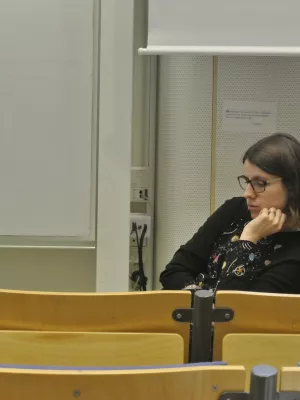
Sanna Alwmark
Postdoc

Tying Shock Features to Impact Conditions : The Significance of Shear Deformation During Impact Cratering
Författare
Summary, in English
Impact cratering is associated with extreme physical conditions with temperatures and pressures far exceeding conditions otherwise prevailing at the surfaces of terrestrial planets. As a consequence, shock-metamorphosed rocks contain unique deformation features such as planar deformation features in quartz, high-pressure mineral polymorphs and melted rock. While the physical conditions of formation for impact-induced melting following the highest pressure and temperature conditions is relatively well understood, aspects of the formation of melt-veins in otherwise seemingly relatively low shock material has been the topic of discussion. In a new study, Hamann et al. (2023, https://doi.org/10.1029/2023JE007742) are able to largely reproduce the current classification of progressive shock metamorphism of felsic rocks using a modern experimental set up that eliminates multiple shock wave reflections at sample containers and excavation and ejection of target material. Importantly, however, they find that shear deformation results in the formation of melt veins at pressures as low as 6 GPa. The authors recover stishovite in melt veins formed at low-moderate (<18 GPa) shock pressure, lower than most previous studies. These results have bearing on our understanding of the conditions of progressive shock metamorphism at terrestrial impact structures. However, since the results are similar to data obtained from experiments on basaltic rocks, the results also have broader implications for understanding the shock histories of meteorite parent bodies. Hamann et al. show the importance of experimental impact cratering for bridging the gap between observations in shocked rocks from terrestrial impact structures, in meteorites, and in returned samples, and their formational conditions.
Avdelning/ar
- Berggrundsgeologi
Publiceringsår
2023-10
Språk
Engelska
Publikation/Tidskrift/Serie
Journal of Geophysical Research: Planets
Volym
128
Issue
10
Dokumenttyp
Artikel i tidskrift
Förlag
Wiley-Blackwell
Ämne
- Geology
Nyckelord
- impact cratering
- shock metamorphism
- shock veins
Status
Published
ISBN/ISSN/Övrigt
- ISSN: 2169-9097

